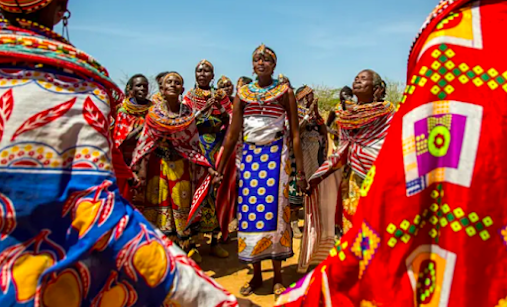6 - Participatory development through WUAs: success?
This post will assess how effective Water User Associations (WUAs) are in achieving gender equality in water access. As stated before, I believe in the incorporation of both bottom-up and top-down approaches.
Water Users Associations
When WUAs have quotas for female participation, participation is achieved. However, is this enough?
WUAs are ‘formal organizations that bring together farmers for the purpose of managing common irrigation systems’ (Aarnoudse et al, 2018). They usually have no more than a few hundred members and are used to allocate water to different users (Aarnoudse et al, 2018).
In Ghana’s UER, landless women were incentivised to join quota-carrying WUAs though food rations and improved irrigation rights (IFAD, 2007). The WUAs also allocated 40% of land plots to women, which helped shift the gendered tradition of male landowners in the region (IFAD, 2007). Women noticeably began to take part and speak up in WUA meetings as a result of such efforts; 40% of participating farmers were women (IFAD, 2007). The formation of ‘women’s groups’ in the UER of Ghana has also benefitted women, enabling them to meet, and share knowledge and financial resources (Lasiter and Stawicki, 2014). These groups have further empowered women to speak up in WUA meetings.
In Tanzania, majority-women WUAs with 70:30 ratios have helped change the nature of water supply schemes; the schemes enabled multiple-use and allowed women equal access to supplies (IFAD, 2007).
Participation in WUAs remains unsuccessful when women feel that they cannot speak due to overbearing male-female ratios. ‘Customary norms’ can inhibit women from sitting next to or speaking in front of elder men (Aarnoudse et al, 2018). Similarly, WUAs are mostly governed and managed by men. This can affect outcomes where women have no control over final decision-making (Aarnoudse et al, 2018). A study in Tigray, Ethiopia found that only 2 out of 38 (5.3%) WUAs were women-led (Imburgia et al, 2020). Additionally, it is often the case that the women attending WUAs are elites or the wives of wealthier male landowners, and not necessarily those in need of improved water access (IFAD, 2007).
So, what works?
In the last two posts, I have briefly glossed over some top-down and bottom-up attempts to include women in water management schemes. Top-down attempts fail when there is no significant effort to actually increase female participation, besides inclusion in broad policies. From this approach, legal enforcement is necessary to provide women with the opportunity to take part (Imburgia et al, 2020). Furthermore, in addition to enforced quotas, education on women’s rights from a bottom-up perspective is also important. Project staff and WUA managers must gain awareness of women’s issues if women’s participation is to be achieved, substantial, and equitable (IFAD, 2007). Through education, the social hierarchies which place women below men can be disrupted (Imburgia et al, 2020). In Tigray, Ethiopia, the combination of ‘effective policy’ and ‘proactive gender awareness efforts’ from governments and international development programmes have amounted to actual inclusion of women, and increased female leadership of WUAs (Imburgia et al, 2020).
Action Aid working with women in Ghana to eradicate poverty: (Action Aid, 2020)
I think that overall, societies must commit to gender mainstreaming, whereby 'gender issues... [are] acknowledged at global, national, institutional, community, and household level' (Svahn, 2011). Through this approach, from all perspectives, sexist cultural barriers can be dismantled, and we can reach one step closer to achieving gender equality.



I think it is quite challenging to determine what works, bottom up and top down strategies can work together if, like you said, there is a framework by top-down institutions that allow the conditions for bottom-up projects to thrive. Nice piece Heather!
ReplyDeleteThank you Sophia! I agree - it is hard to know exactly which aspects and methods are most effective.
DeleteYou've taken a very complex and boiled it down to something that is easy to understand. I think it would be nice if you can go into more detail about Tigray, Ethiopia. Why has it been an example of effective/successful policy, and what can other countries in Africa learn from Ethiopia?
ReplyDeleteThank you Nasir, that is a good point - I should add some more detail to the ways in which Ethiopia has managed to carry out effective inclusion of women in WUAs.
Deletei completely agree with Sophia and i think this is another really good post. you have used a detailed account of a specific case study to make your point, had clarity throughout and a good conclusion to end it all and state your point.
ReplyDeleteThank you Maha! I'm glad you enjoyed it
Delete